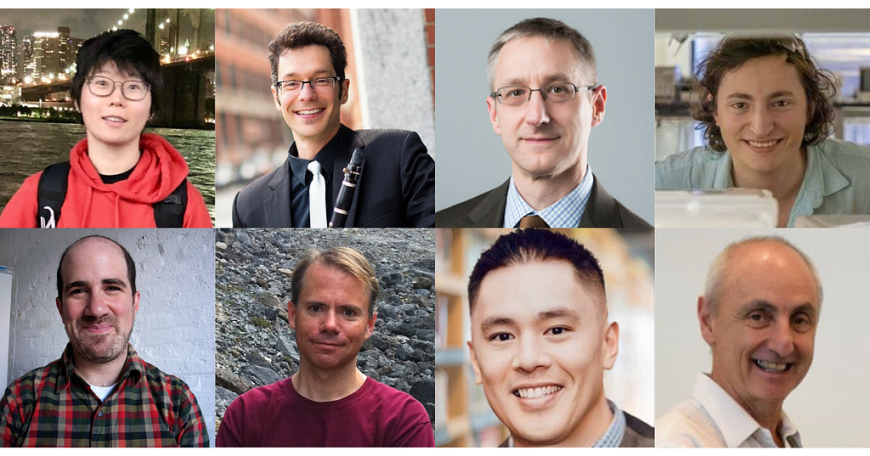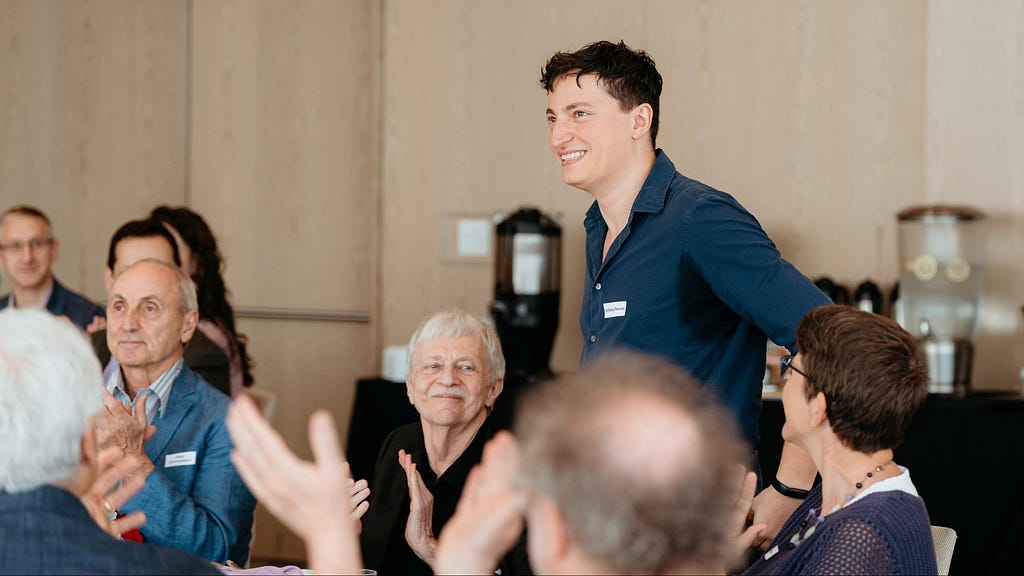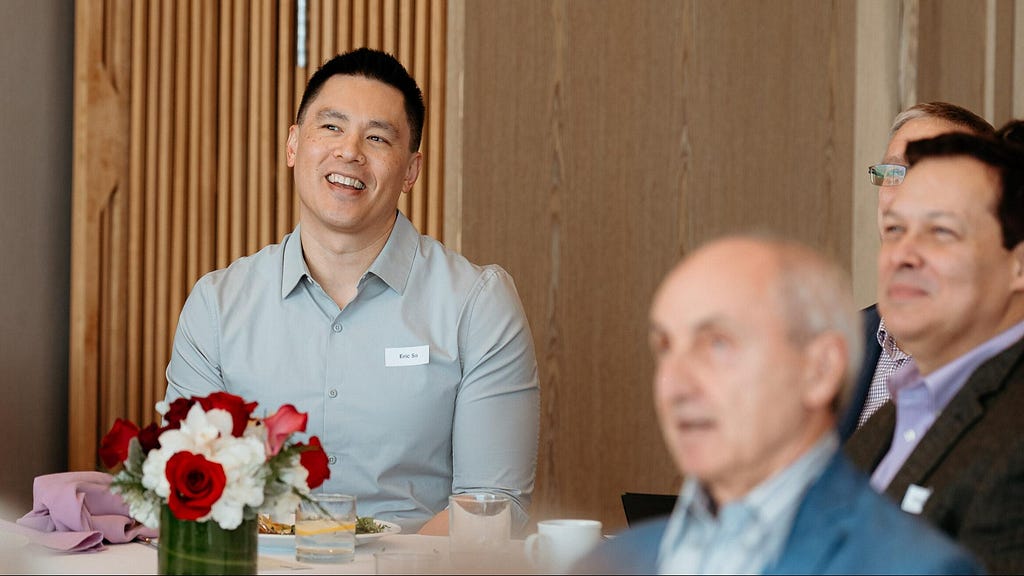
Eight MIT faculty and instructors awarded for their use of digital technology in exemplary teaching
By Jovi Nazareno
Eight MIT faculty and instructors have received the 2025 Teaching with Digital Technology Awards. The student-nominated and student-judged awards recognize faculty and instructors who have effectively used digital technology to improve teaching and learning at MIT.
Co-sponsored by MIT Open Learning and the Office of the Vice Chancellor, the awards recognize MIT educators for their innovations and give the Institute’s community the opportunity to learn from their practices. The 2025 awardees join the ranks of 102 previous recipients since 2016, all of whom demonstrate commitment to improving teaching and student learning.

This year, students submitted 88 nominations and selected seven winners. One additional recipient was honored with a Teaching with Digital Technology: Excellence Award.
“Students wrote nominations for faculty and instructors who used technology — ranging from generative AI, interactive demos, financial simulations, to hands-on demonstrations and computational sketching,” says David Darmofal, vice chancellor for undergraduate and graduate education at MIT, “all in ways that engaged students and aided their learning.”
The winners of the 2025 Teaching with Digital Technology Awards are:
Eran Egozy, Professor of the Practice in Music Technology

Students appreciated Eran Egozy’s willingness to share his thought-process behind game development, whether through live coding or real-time walk-throughs of a game. A student in 21M.585 (Interactive Music Systems) said, “What got me really engaged and what stood out to me was that he brought an Xbox to class and played Fantasia in front of us, explaining how he made the game. By demonstrating his games and explaining how he created them, I got a new perspective from an industry developer’s point of view.”
Zachary Lieberman, Adjunct Associate Professor of Media Arts and Sciences
In MAS.S60 (Drawing ++) Zachary Lieberman created custom-designed computational sketching exercises. Students commended the fun exercises and felt encouraged to experiment with the intersection of traditional artistic practices and cutting-edge technology. “His teaching creates an environment where technology becomes a collaborative partner in the creative process,” shared a student. “[This is] a perspective that has been invaluable not just for this class but for how I approach all creative and technical challenges.”
Christopher Noe, Senior Lecturer of Accounting in Management

Christopher Noe used Excel-based simulations and hands-on financial analysis to engage students in applying complex financial concepts to strategic decision-making. “What sets Professor Noe apart is not just his ability to integrate technology, but his intentional approach to using it as a catalyst for critical thinking,” said a student in 15.521 (Accounting Information for Decision Makers). “Rather than merely presenting static financial statements, he encouraged students to manipulate data, test assumptions, and analyze business scenarios in real-time, fostering a mindset of analytical rigor and strategic insight.”
Anthony Pennes, Technical Instructor in Mechanical Engineering & Electrical Engineering and Computer Science

Students in 6.9020 (How To Make (almost) Anything) were deeply inspired by Anthony Pennes, who instilled confidence in their ideas and skills. Pennes helped students take a complex project and make it work in real life. To help students better understand different processes, Pennes used live and hands-on demonstrations. Soldering was done under a microscope and projected onto a screen, enabling students to see the melting, joining, and shrinking of tiny solder balls during the process.
Scott Sheffield, Leighton Family Professor of Mathematics
Scott Sheffield creatively integrated AI-generated songs to sum up or demonstrate mathematical concepts, such as a piano piece modified so that the notes fell according to a Poisson process. A student in 18.600 (Probability and Random Variables) shared, “During lecture, he always includes a quick break where he shows us a cool application of the material online in a hands-on way, has us sing/clap along to the AI generated song, and explain problem set problems in a way that’s very engaging and interesting.”
Shen Shen, Lecturer in Electrical Engineering and Computer Science
To help teach how and why machine learning can break down, Shen Shen used concrete examples, created interactive lecture slides, and maintained an organized course website. Students in 6.390 (Introduction to Machine Learning) commended Shen for her engaging lectures and resources, and most of all, for the passion she brings to the classroom. “Shen’s use of technology, and her enthusiasm for teaching has made her one of the best lecturers I’ve ever had,” a student said. “As students, we’ve gained better intuition and understanding of the technical concepts of Machine Learning, as well as motivation and guidance to continue pursuing Machine Learning in the future.”
Eric So, Sloan Distinguished Professor of Global Economics and Finance & Professor of Global Economics and Management

Students praised Eric So’s integration of generative AI into assignments, and appreciated the use of various tools and applications, prompts and results, and hands-on exercises. A student in 15.236 (Global Business of Artificial Intelligence and Robotics) shared, “I have learned so much from him about valuable use cases, best practices, and pitfalls surrounding AI which I plan to carry with me for a long time. He is truly on the cutting edge.”
The winner of the 2025 Teaching with Digital Technology: Excellence Award is:
Peter Dourmashkin, Senior Lecturer in Physics

Over the years, many students have noted how Peter Dourmashkin goes out of his way to make learning physics very hands-on, is passionate about teaching, and is patient with students. Peter was one of the first-ever recipients of the Teaching with Digital Technology Awards in 2016. Since then, students have consistently nominated him year after year — a total of 37 student nominations. They have talked about his use of the Lightboard, the TEAL format of 8.01/8.02, MITx, clicker questions, videos, and problem-solving packets, to name a few.
“Peter Dourmashkin is an absolute legend and the impact he’s had on first-year physics has been incredible,” expressed a student. “Combining in-person lectures with online learning sequences ensures every student is able to learn at their own pace in the format that works best for them. This plus the implementation of experiments, coding, simulation, and now AI in the classroom proves how Dourmashkin has gone above and beyond to create incredible and effective lectures.”
“Peter’s contributions to education are rather immeasurable, felt deeply by his students who feel welcomed and that they belong and can succeed in physics courses and by his colleagues who continue to be inspired by him,” Darmofal said.
In the words of a recent set of student nominations, “Dourmashkin is the GOAT” (Greatest Of All Time), and he “is a revolutionary and deserves a spot in the history books.”
Eight MIT faculty and instructors awarded for their use of digital technology in exemplary teaching was originally published in MIT Open Learning on Medium, where people are continuing the conversation by highlighting and responding to this story.

